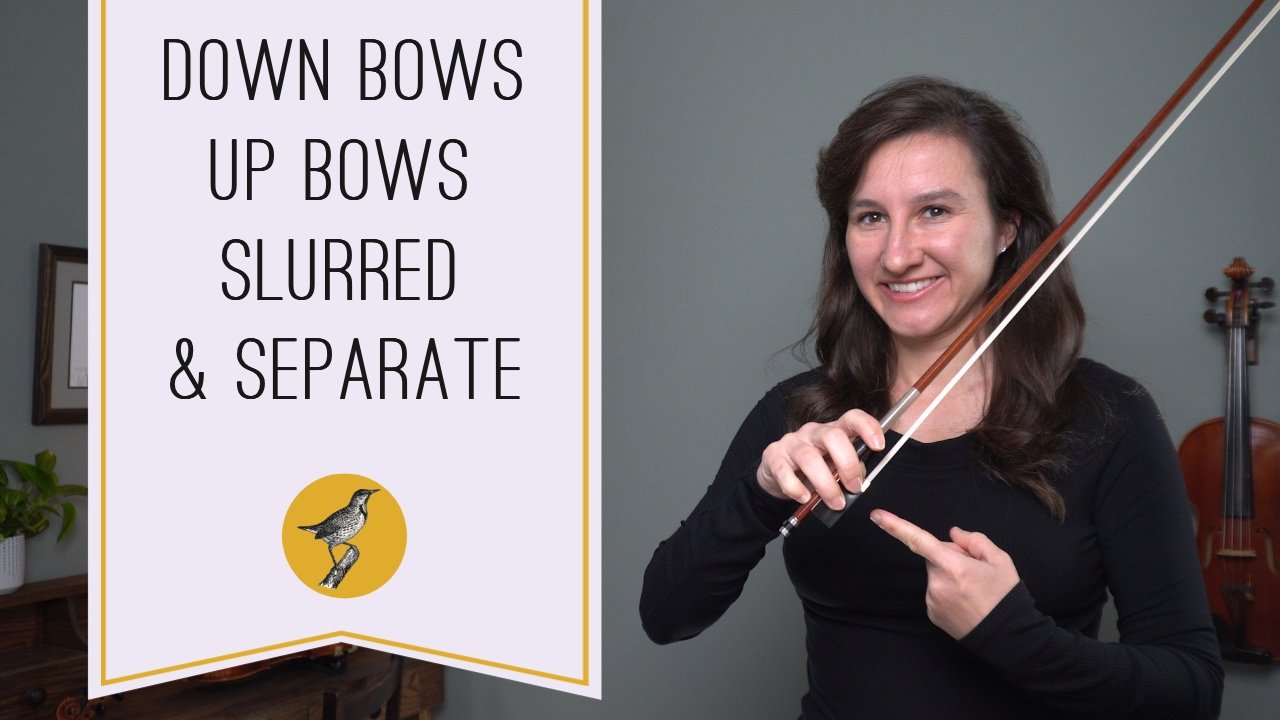10 Tips for Better Violin Intonation
/How do you play in tune on an instrument with no frets or markings? If you feel like you are never in tune on the violin, here’s 10 reasons why you might be struggling with bad violin intonation and how to play more in tune!
There’s a lot that goes into playing in tune on the violin. If you feel a little bit overwhelmed at all the reasons that might be affecting your violin intonation, make sure you stay to the end because I’ll give you one practice technique that will help you solve all of these problems.
#1 Using finger tapes or finger decals
Wait, what? Aren’t these supposed to help you play in tune? Not really, in fact it will contribute to bad intonation in the long run. Think about it, playing in tune on the violin is an auditory skill. Finger tapes are visual cues. How can a visual cue help you with an auditory skill? Finger tapes might help when you’re just starting off, but they will also force you to rely on your eyes and you’ll never build those ear training skills that you need to play really in tune on the violin.
(Watch the Pros and Cons of Using Finger Stickers on Your Violin)
So work on developing your aural skills instead of your visual skills and your intonation will improve.
#2 Incorrect left hand technique
If you’ve got a crooked wrist or maybe your thumb is pulled far back, it’s going to make it harder if not impossible for you to consistently play in tune. Crooked wrists and other left hand problems can introduce tension, which make playing in tune very difficult. Incorrect left hand technique can also force you to play with flat fingers. And flat fingers is the next reason you may struggle to play in tune.
#3 Flat fingers
Your left hand fingers need to be curved like little arches or boxes. This allows you to hit the string with accuracy. If your fingers are flat or sloping you won’t be able to be as accurate with your pitch, resulting in inconsistent or bad intonation.
#4 Not leaving fingers down
My rule is that if you put a finger down you should leave it down until you absolutely have to move it. Let’s say you play first finger and then you play 3rd finger. Are you leaving the first finger down? Or is it flying off the fingerboard when you aren’t using it?
Leaving fingers down gives you anchor points and helps you compare other notes.Those anchor points will help you build muscle memory in your left hand which is essential to playing in tune.
#5 Using tuners
If you’re relying on a flashing green screen to tell you if you’re in tune on the violin, once again you’re relying on a visual indication for an auditory skill. It might help in the short term, but it’s going to hurt your progress in the long-run because you’re not developing those vital auditory skills that you need to help you play in tune.
Instead of using tuners, use music play back programs or music writing software like MuseScore, or or get a piano or piano app, play the notes you’re having trouble with on the piano. That way you know what the note should sound like and you can match that pitch on your violin.
#6 Not practicing ear training
You need to train your ear to hear intonation problems the same way you train your eyes to read music or train your right hand to hold the bow. Unfortunately ear training is a topic we don’t talk about enough in the violin teaching world. EarMaster is a great ear training tool. I also have a complete course on ear training for violinists in my online studio. Ear training is a topic I cover a lot in my studio and show you lots of ways you can develop your ear for better violin intonation.
#7 Thinking of intonation as a one note problem
Intonation is not a one note problem. It’s a two note problem. With the exception of the first note of a song, every note follows another note. No note exists in a vacuum. You have to think about what note comes before the out of tune note. Practice those 2 notes, think about how you get to the out of tune note, how you stretch for it, or how you prepare for it.
For instance if you have a big stretch to a 4th finger and then a low 2 after the 4th finger, that big stretch to the 4th finger is going to affect the low 2nd finger. You’re going to have to stretch back for the low 2 to get it in tune. Thinking of any violin intonation problem in terms of two notes will help you play more in tune.
#8 Tension
Tension is a big reason for bad intonation on the violin.
First of all I want you to remember this rule: there is no such thing as perfect intonation. There is the illusion of perfect intonation.
As you progress on the violin, ideally your ear is progressing as well. Your ear begins to identify when a note is out of tune and your ear will tell you how how that note is out of tune: too sharp or too flat. Your left hand finger quickly adjusts to match what your ear is telling you the note should sound like. Ideally this whole process happens quick enough that your listeners have no idea that you originally played the note out of tune.
The point here is that your fingers need to be able to adjust and move with lightening quick speed and if you are tense or have a death grip on the violin, your fingers will never be able to move quick enough to play in tune.
(Watch How to Get Rid of the Death Grip)
#9 Not preparing the fingers
When you’re playing one note, you need to be thinking about the next note and your finger needs to be preparing for that next note. For instance, if I’m playing 1st finger and my next note is a 4th finger, while I”m playing the 1st finger, I need to be stretching up with my pinky, maybe moving my thumb up, and hearing in my head what that next note needs to sound like. If you’re not thinking ahead, every note will catch you off guard and you’ll always be playing catch-up.
If you’re thinking, that’s a lot to think about, you’re right. If you’re also thinking there’s no way I could ever think about all of those things while I’m playing violin, you’re wrong. That brings me to my last reason you may be struggling with intonation.
#10 You’re not practicing slow enough
You need to dedicate time for every scale, song, and passage and play it unbelievably slow. Like, unbelievably slow.
When I play that slowly, I actually have the time to think about all of the those things I talked about. I have time to prepare the note, I have time to force my hand to relax, I have time to think about intonation in terms of two notes, I have time to curve my fingers, I have time to think about leaving fingers down, and I have time to understand what my left hand is actually doing.
Playing unbelievably slow is one of the best tools we have as violinists, but unfortunately it’s one of the tools we use the least.
So take some time to play unbelievably slow every day and I think you will hear a major improvement in your violin intonation!




















![10 Best Violins for Beginners [2024] A Violin Teacher’s Ultimate Guide](https://images.squarespace-cdn.com/content/v1/554545e3e4b0325625f33fa6/1600433065588-JQV56M1W9LNI833AVGEE/10+best+violins+for+beginners+2020.jpg)



